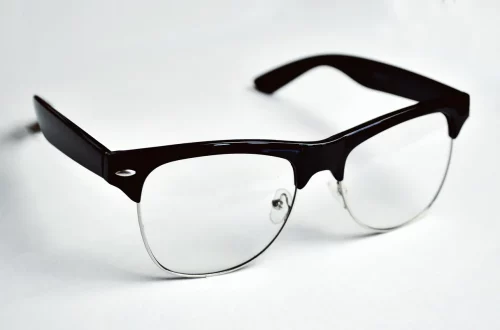
What to Do If Your Dog Broke a Tooth: A Quick Guide for Pet Owners
Dealing with a pet’s dental injury can be a distressing experience for any dog owner. Dogs are naturally curious creatures, and their playful nature often leads them into situations where accidents can happen. One of the most common injuries among dogs is a broken tooth, which can occur due to various reasons such as chewing on hard objects, playing rough, or even dental diseases that weaken the tooth structure. A broken tooth can not only cause pain and discomfort for your furry friend but can also lead to more serious health issues if left untreated.
As a pet owner, it’s essential to understand the signs of a broken tooth and the immediate steps you can take to help your dog. Recognizing the symptoms early can make a significant difference in your dog’s recovery and overall well-being. Additionally, understanding the importance of dental health in dogs can help prevent such incidents in the future. Regular dental care and veterinary check-ups are crucial in maintaining your pet’s oral health and avoiding potential emergencies.
In this article, we will explore the various aspects of dealing with a broken tooth in dogs, providing you with valuable insights and practical tips to ensure your pet receives the care they need. Let’s dive into the details.
Identifying the Symptoms of a Broken Tooth
Recognizing the symptoms of a broken tooth in your dog is the first step in addressing the issue. While some dogs may show visible signs of distress, others may not exhibit obvious symptoms. Common indicators of a broken tooth include excessive drooling, difficulty eating, or blood in the saliva. If your dog is suddenly reluctant to chew on their favorite toys or seems to avoid hard treats, these could be signs that they are experiencing pain from a dental issue.
You might also notice behavioral changes in your dog. They may become more irritable, anxious, or withdrawn. Some dogs may even paw at their mouths or shake their heads in an attempt to alleviate discomfort. If you observe any of these signs, it is crucial to examine your dog’s mouth carefully. Look for broken, chipped, or discolored teeth. If your dog allows it, gently lift their lips to inspect the gums and teeth, keeping an eye out for any swelling or signs of infection.
If you suspect a broken tooth, it’s important to remain calm and avoid causing further stress to your pet. While waiting to see a veterinarian, try to keep your dog’s environment calm and comfortable. Avoid giving them hard treats or toys that could exacerbate the injury. Instead, focus on offering soft food and fresh water to keep them hydrated and nourished.
In the event that you cannot visually confirm a broken tooth, a veterinary examination is necessary. A vet can perform a thorough oral examination and may recommend X-rays to assess the extent of the damage. Early detection and treatment are vital to prevent complications such as infection or tooth loss.
Immediate Steps to Take After Your Dog Breaks a Tooth
Once you have identified that your dog has broken a tooth, taking immediate action is crucial for their well-being. The first step is to contact your veterinarian for advice. They will guide you on how to proceed and may schedule an appointment for a thorough examination. In the meantime, here are some immediate steps you can take:
First, keep your dog calm and comfortable. A broken tooth can be painful, and your dog may be anxious due to the sudden discomfort. Provide a quiet space where they can relax. Avoid giving them food or treats until you have consulted with your veterinarian, as chewing may aggravate the injury.
If there is bleeding, apply gentle pressure with a clean cloth or gauze to the affected area. This can help minimize blood loss and provide some comfort to your dog. Monitor the bleeding closely—if it doesn’t stop within a few minutes or if it seems excessive, seek emergency veterinary care.
In addition to managing bleeding, be vigilant about your dog’s overall behavior. Watch for signs of distress such as whining, excessive drooling, or refusal to eat. These behaviors can indicate that the broken tooth is causing significant pain or discomfort.
If your dog is in severe pain, your veterinarian may prescribe pain relief medications to help manage their discomfort until a more definitive treatment plan can be implemented. Do not give your dog any human medications without consulting your vet, as certain substances can be toxic to dogs.
Finally, make arrangements for your dog to see the veterinarian as soon as possible. Depending on the severity of the break, your vet may recommend various treatment options, including extraction, dental bonding, or root canal therapy.
Understanding Treatment Options for Broken Teeth
When it comes to treating a broken tooth in dogs, several options are available, and the right one will depend on the severity of the injury. Your veterinarian will perform a thorough examination and may use X-rays to determine the extent of the damage before recommending a treatment plan.
In cases where the break is minor and does not affect the tooth’s root or cause significant pain, your veterinarian may suggest dental bonding. This procedure involves applying a composite resin material to the broken area to restore the tooth’s structure and appearance. Dental bonding is often a quick procedure and can be completed during a single visit.
If the break is more severe and involves the tooth’s root, extraction may be the best option. A tooth extraction is a common procedure in veterinary dentistry and is usually performed under anesthesia. Your veterinarian will ensure that your dog is comfortable throughout the process. Post-extraction care is crucial, and your veterinarian will provide you with instructions on how to care for your dog during their recovery.
In some cases, if the tooth is significantly damaged but still viable, your veterinarian may recommend a root canal. This procedure involves removing the damaged pulp from the tooth and sealing it to prevent infection. Root canals can be more complex and may require a referral to a veterinary dental specialist.
Regardless of the treatment option chosen, follow-up care is essential. Your veterinarian will likely schedule a follow-up appointment to monitor your dog’s recovery and ensure that there are no complications. Maintaining regular dental check-ups for your dog can help prevent future dental issues and ensure their oral health remains a priority.
Preventing Dental Injuries in Dogs
Preventing dental injuries in dogs is key to ensuring their health and well-being. There are several proactive measures you can take to minimize the risk of broken teeth and other dental issues.
First and foremost, provide your dog with appropriate chew toys. Avoid hard items like bones, rocks, or extremely hard toys that can lead to broken teeth. Instead, choose toys specifically designed for dental health, which can help clean teeth while being safe to chew.
Regular dental care is also vital. Brush your dog’s teeth regularly using toothpaste formulated for pets. This practice helps remove plaque and tartar buildup, reducing the risk of dental diseases that can weaken teeth. Additionally, consider incorporating dental treats or chews into your dog’s routine, as they can help promote oral hygiene.
Routine veterinary dental check-ups are essential for early detection of potential dental issues. Your veterinarian can perform professional cleanings and exams to keep your dog’s teeth and gums healthy. They can also provide guidance on your dog’s specific dental needs based on their breed, age, and health condition.
Monitoring your dog’s chewing habits is also important. If you notice that your dog frequently chews on hard objects or exhibits destructive chewing behavior, redirect them to appropriate toys. Training your dog to understand what is acceptable to chew on can help prevent injuries.
Finally, be aware of any signs of dental discomfort in your dog. Early detection of issues can lead to prompt treatment, preventing more severe problems down the line. Regularly inspecting your dog’s mouth and teeth can help you catch potential issues before they escalate.
In conclusion, while a broken tooth can be a concerning issue for pet owners, understanding the symptoms, immediate steps to take, and treatment options can help you navigate this situation effectively. Always consult with your veterinarian for personalized advice and care for your furry friend.
*Disclaimer: This article is intended for informational purposes only and should not be considered medical advice. Always consult with a qualified veterinarian for any health concerns regarding your pet.*




